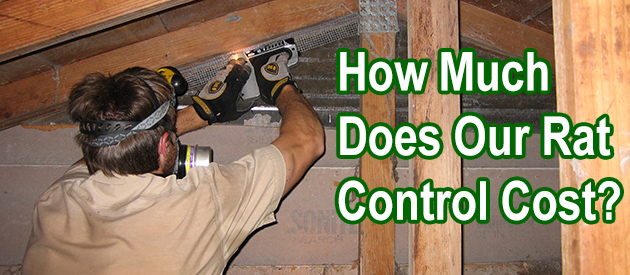Bibb County, Macon Rat Control Situation:
Hi David, I'm trying to catch/kill a rat in my garage. I've set 3 snap traps and he has "snapped" all three of them but still got away. I did notice some blood on the 3rd snap trap but that's it. How do you think he got away from all 3? Is he too big for the traps to be effective? or was his head just not in the right place when the trap snapped? I placed them all along walls with the bait close to the wall. I've reset all my traps but so far he appears scared to go towards any of them. Any ideas?
Hi - I live in Manufactured house in a heavy wooded area. I am not sure if I have mice or rats, but I do have problems occasionally and too late already used poison. Can you tell me the average charge to hire someone and also where we might look for opening in manufactured house as there is no attic and only a crawl space underneath the house. I am terrified of these critters and do not want them in my house. Will they be attracted bu rawhide and such types of dog bones? As I have two dogs and it is hard to keep track of there chew stuff they like to hide. Thanks for any advice you can spare.
Macon Rat Control Tip of The Week
Will Rats Hide From People?
The survival instinct of rats leads them to be cautious animals. The fear of being eaten by other predators makes them live in dark places and avoid being seen in broad daylight. People who come in contact with a rat may have several reactions, but the most common one is panic trying to shoo it away or kill it with whatever they have on hand. This situation causes fear in rodents who will look for hiding places and avoid being seen again.
The Mystery Of Smell
Rats use their powerful sense of smell as an effective survival technique. Through odors, a rat can perceive a predator, including species that are still unknown to the animal. Surprisingly, rats flee from cats not only because they know they may be eaten, but also because cat saliva contains chemicals that cause fear when rodents detect them.
Rats Are Pests To Humans
Farmers usually farm in warm places with relative humidity. Likewise, city dwellers tend to have a busy lifestyle, so their environment can quickly lead to clutter and disorder. Both scenarios are perfect for rodents who need the shelter and food provided by a barn, a dump, a messy house, or a sewer.
Rats are quite practical and, if necessary, can adapt to living anywhere, even in a somewhat messy house. The conditions for living comfortably and reproducing are emphasized in people's homes.
Human beings can unknowingly provide rodents with everything they need to survive, turning them into a pest. Rats, being able to take advantage of everything, from rigorously stored food to napkins thrown away, are able to grow as a population. The main consequence of a growing rodent population is the damage to people's health.


